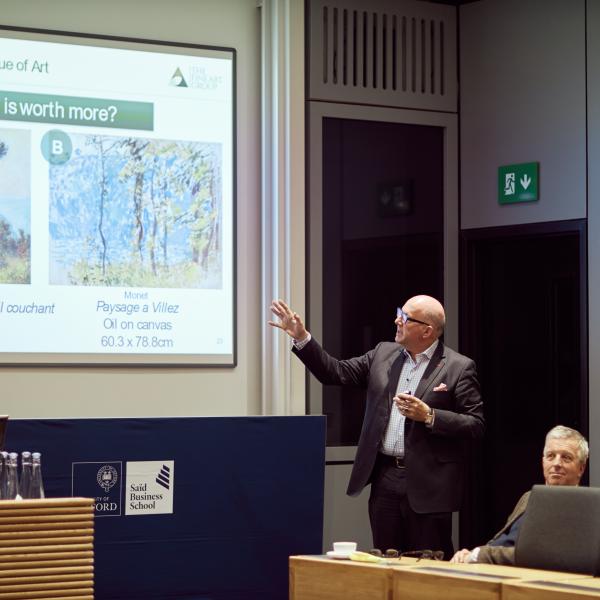About the event
Philip Hoffman of the Fine Art Group served up a generous helping of anecdotes about art and value.
What makes a painting worth millions of dollars? Philip Hoffman, who spent 12 years at the auction house Christie’s, related how a customer was struck by a painting of waterlilies that was for sale and asked who the artist was. She was told it was by Monet and was estimated to be worth £6 million. ‘Darling, we must have it,’ she told her husband. ‘It has got exactly the same blues and greens as our wallpaper. If we buy this for £5 million we won’t have to redecorate the drawing room.’
It sounds like something straight out of P.G. Wodehouse – but is it any worse than the people who bought a Picasso for $6 million, only to have to leave it under wraps in a warehouse when its authenticity was questioned. The woman who bought the waterlilies may have not have known much about art, and arguably would have been just as happy with anything else, but she and her guests are still enjoying looking at a beautiful painting.
Hoffman also described how, when he first started working at Christie’s, and in possession of £5000, he had come across two very similar paintings of St Mark’s Square in Venice, one for £5000 and one for £350,000. The latter was obviously beyond his means at the time, so he announced his decision to buy the former. But the director told him: ‘I won’t allow you to. Although it says 1740 most of it was painted in 1980 and there’s very little of the original picture there. This [pointing to the £350,000 painting] is the one you should buy.’
Not unlike the housing market, the fine art market seems to be complicated by the conflicting forces of what people love, and what makes a good investment. Some people can be put off buying something that they love by an expert who thinks only in terms of understanding the investment value. For some it is the idea that art is an investment that pushes up the price and encourages them to buy expensive works that they don’t actually like. Others buy what they like without thinking about the additional complications.
Hoffman told another story of a client who had impulsively bought two pictures for $70 million and wanted to take them to his house in Brazil. Hoffman told him it would cost £28 million in import taxes to do so. ‘I said he would be better off using $28 million to buy a flat in New York and take the painting there. So he did.’

